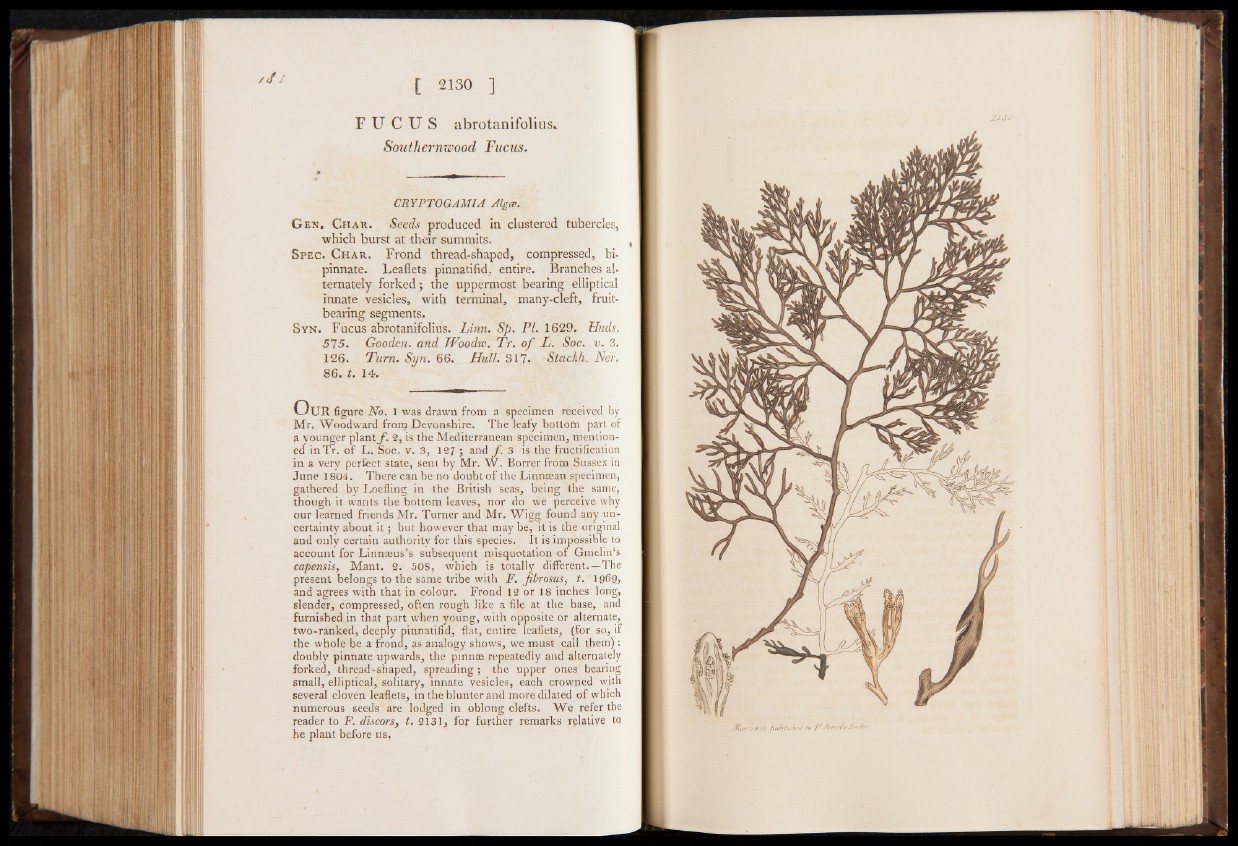
F U C U S abrotanifoliusç
Southernwood Fucus.
CRYPTOGAMIA Alga.
G en. C h a r . Seeds produced in clustered tubercles,
which burst at their summits. ,
S pec. C h a r . Frond thread-shaped, compressed, bi-
pinnate. Leaflets pinnatifid, entire. Branches alternately
forked; the uppermost bearing elliptical
innate vesicles, with terminal, many-cleft, fruitbearing
segments.
Syn. Fucus abrotanifolius. Linn. Sp. PI. 1629. Huds.
515. Gooden, and Woodw. Tr. o f L. Soc. v. 3.
126. Turn. Syn. 66. Hull. 317. Stackh. Ner.
86. t. 14.
O u r figure No. 1 was drawn from a specimen received by
Mr. Woodward frorp Devonshire. The leafy bottom part of
a younger plant f . 2, is the Mediterranean specimen, mentioned
inTr. of L. Soc. v. 3, 127 ; and f . 3 is the fructification
in a very perfect state, sent by Mr. W. Borrer from Sussex in
June 1804. There can be no doubt of the Linnsean specimen,
gathered by Loefling in the British seas, being tbe same,
though it wants the bottom leaves, nor do we perceive why
our learned friends Mr. Turner and Mr. Wigg found any uncertainty
about i t ; but however that may be, it is the original
and only certain authority for this species. It is impossible to
account for Linnaeus’s subsequent misquotation of Gmelin’s
capensis, Mant. 2. 508, which is totally different.—The
present belongs to the same tribe with F. fibrosus, t. 1909,
and'agrees with that in colour, Frond 12 or 18 inches long,
slender, compressed, often rough like a file at the base, and
furnished in that part when young, with opposite or alternate,
two-ranked, deeply pinnatifid, flat, entire leaflets, (for so, if
the whole be a frond, as analogy shows, we must call them):
doubly pinnate upwards, the pinnae repeatedly and alternately
forked, thread-shaped, spreading; the upper ones bearing
small, elliptical, solitary, innate vesicles, each crowned with
several cloven leaflets, in the blunter and more dilated of which
numerous seeds are lodged in oblong clefts. We refer the
reader to F. discors, t, 2131, for further remarks relative to
be plant before us.